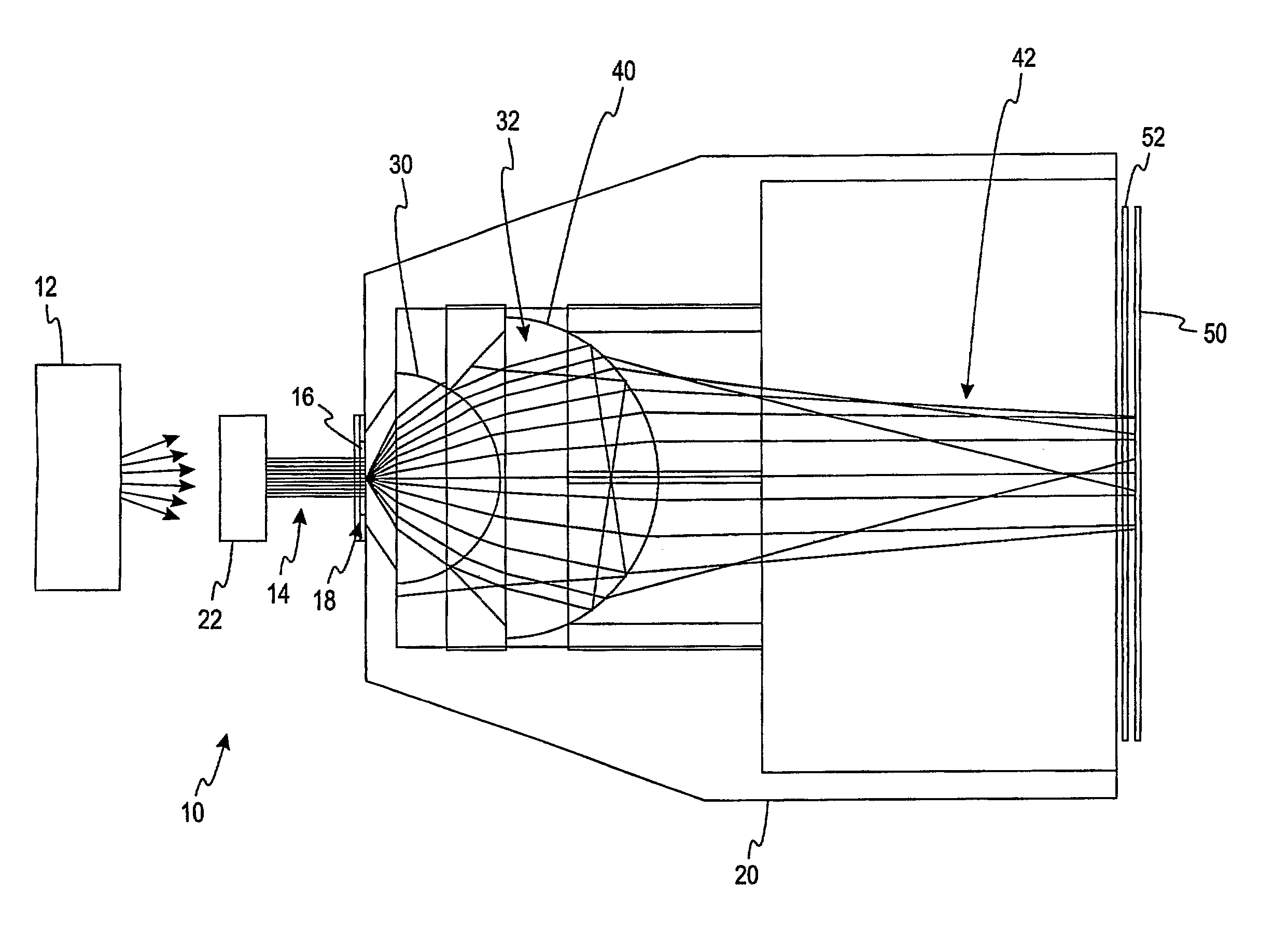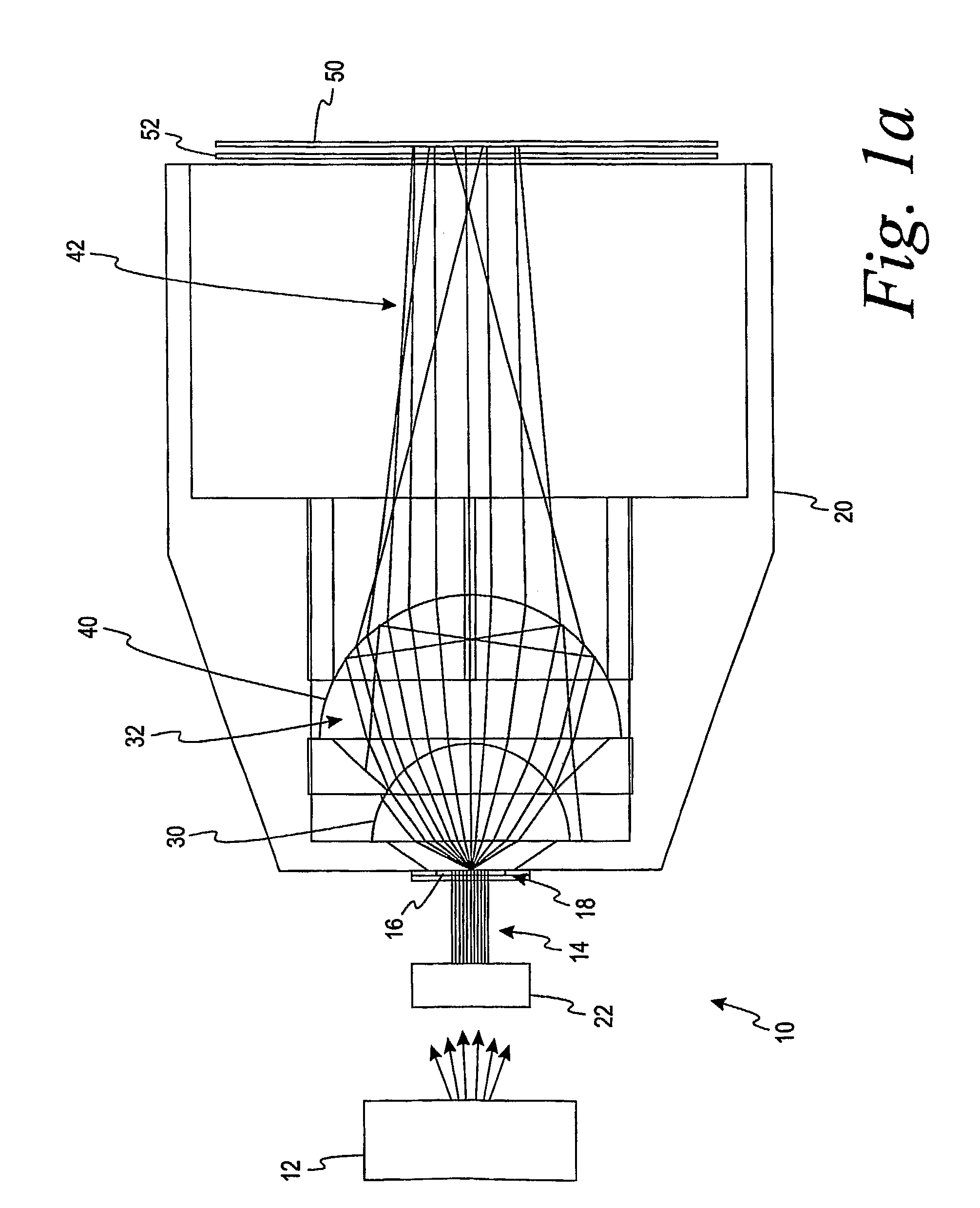Transmission spectroscopy system for use in the determination of analytes in body fluid
a technology of total transmission spectroscopy and body fluid, which is applied in the field of spectroscopy, can solve the problems of large angle loss of light exiting the sample, the cost of integrating spheres and photomultipliers, and the cost of these devices, so as to achieve the effect of cost-prohibition in the production of existing total transmission spectroscopy systems for use by patients
- Summary
- Abstract
- Description
- Claims
- Application Information
AI Technical Summary
Benefits of technology
Problems solved by technology
Method used
Image
Examples
examples
[0063]Referring now to FIG. 3a, one embodiment of the present invention (transmission spectroscopy system 10) measured the total transmission levels of whole blood samples having hematocrit levels of 20% reacted with reagents, and each had a different glucose concentration level—54, 104, 210, and 422 milligrams of glucose per deciliter of blood (“mg / dL glucose”). The transmission spectroscopy system 10 will be referred to in the examples as the “inventive system.” White light from the light source 12 (FIG. 1a) was transmitted through the sample. The total transmission level measured from 500 nm to 940 nm was plotted in FIG. 3a for each of the glucose concentration levels. The transmission was lower from 500 to 600 nm due to the absorption of hemoglobin. Transmission loss caused by light scattered by red blood cells (hematocrit) affects the transmission from 500 nm to 940 nm. The indicator in the glucose reaction absorbs between 500 and 750 nm, so there was separation between the glu...
embodiment b
Alternate Embodiment B
[0084]The system of Alternate Embodiment A wherein the fluid sample is blood and wherein the sample cell receiving area includes a dried reagent in the absence of a hemolyzing agent is adapted to produce a chromatic reaction when reconstituted with blood.
embodiment c
Alternate Embodiment C
[0085]The system of Alternate Embodiment A wherein each of the first and second lenses is a half-ball lens.
PUM
| Property | Measurement | Unit |
|---|---|---|
| angle of acceptance | aaaaa | aaaaa |
| acceptance angle | aaaaa | aaaaa |
| angle of divergence | aaaaa | aaaaa |
Abstract
Description
Claims
Application Information
 Login to View More
Login to View More - R&D
- Intellectual Property
- Life Sciences
- Materials
- Tech Scout
- Unparalleled Data Quality
- Higher Quality Content
- 60% Fewer Hallucinations
Browse by: Latest US Patents, China's latest patents, Technical Efficacy Thesaurus, Application Domain, Technology Topic, Popular Technical Reports.
© 2025 PatSnap. All rights reserved.Legal|Privacy policy|Modern Slavery Act Transparency Statement|Sitemap|About US| Contact US: help@patsnap.com



